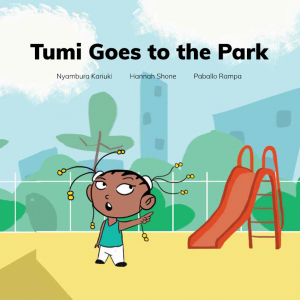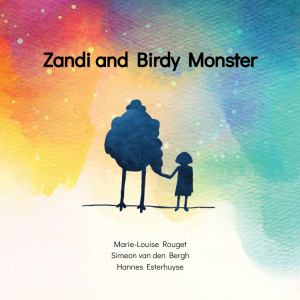This is a guest post by Kristy Darby, a Digital Collections Specialist in the Digital Content Management Section in Library Services.

A cover image of the book Tumi Goes to the Park (LCCN 2018296484).
The Library of Congress’ Digital Collecting Plan, finalized in 2017, proposes to “Develop and implement an acquisitions program for openly available content.” To support this goal, the Library’s Digital Content Management section has been helping to pilot new procedures, including the acquisition of digital, open access children’s books. Many discussions of open access eBooks focus on the significant impact of openly licensed works in academic and scientific publishing, but beyond this, a broader community of authors and artists also share creative works. As part of the pilot effort, the Library of Congress acquired and made available 6 creative commons licensed books from Book Dash, a nonprofit organization founded in 2014 in Cape Town, South Africa. The founders organize “Book Dashes” — 12-hour book-making events that bring authors, editors, designers, and illustrators together to create new, born-digital children’s books that are openly licensed and made available on the web for free.
The successful acquisition of these titles involved many offices within the Library. Selections were initially identified by Donna Brearcliffe, formerly of the Library’s Collection Development Office (CDO). Next, staff in the Literature section of United States Programs, Law and Literacy Division (USPRLL) made catalog records according to the Children’s and Young Adults’ Cataloging (CYAC) Program’s methods. Then, the files for the books were acquired and processed through the pilot general routine workflow for acquiring open eBooks, which has been developed by the Digital Collections Management section. “It was great to have the opportunity to recommend these titles for the Library’s collections,” said Brearcliffe. “Being able to make openly licensed, born-digital, children’s book freely available on loc.gov is an important step in the direction of making more open access content available to our users.” Ultimately, these books received full cataloging and are now available directly and freely from the Library of Congress website for online viewing or download by users anywhere in the world.
Acquiring, Preserving, and Providing Access

A cover image of the book Zandi and Birdy Monster (LCCN 2018296486).
As part of the Digital Content Management section, I collaborated with staff in CDO and USPRLL to create and implement workflows for managing and making available these eBooks. I downloaded the eBook files directly from the publishers’ websites, where the files are openly available, then transferred the files to Library of Congress’ long-term digital storage. During this process, the content was also copied to servers providing public access, ensuring that the eBooks will be freely available to any end user with an internet connection. As the catalog records were already created and available in the Library of Congress catalog, just a few additions to the MARC records were needed to connect the descriptive metadata with the metadata associated with the digital content and make the books available in the public presentation. After that, each book became available on the Library’s website for viewing and download.
Lee Ann Potter, Director of Educational Outreach for the Learning and Innovation Office, describes her experience working with both new born-digital children’s eBooks as well as traditional books: “Earlier this year, we were thrilled that the Library made available an online collection of children’s books—but due to rights restrictions, all of the titles included were published prior to 1923.” she says. “While they are marvelous selections, they are less diverse than more contemporary titles,” she says. Thus, “Making contemporary open access children’s eBooks available is exciting—especially in multiple languages!”
The Added Value of CYAC Cataloging
The pilot books were cataloged and described according to the specifications maintained by the Library of Congress CYAC program. CYAC guidelines focus on producing records that enable discovery of cataloged works to children, youth, school teachers, and public libraries. Along with this, each record for these works of fiction includes a brief description. Because these works have received this kind of cataloging, the work of the Library of Congress not only enhances the long-term preservation of these digital works, but it also makes it easier for other libraries to get access to catalog records that they can use to enable access of this content for their users. Stacey Devine, Cataloger for USPRLL Literature Section, states, “The CYAC Program is focused on our end user. For Children and Young adult material, we want to ensure that Library resources are easily retrievable for this specific audience. The CYAC Program tailors the cataloging to include brief summaries that are non-biased. We also tailor the subject headings so they are accessible and geared toward the way children search.”

A screenshot showing added subject headings and additional descriptive information, from the item page for Zandi and Birdy Monster (LCCN 2018296486).
Managing endangered openly available content benefits the Library as well as American librarians and readers. The Library of Congress distributes MARC records for all content cataloged at the Library through the Cataloging Distribution Service. The original, full level MARC records for these children’s eBooks are available for librarians around the country for ingest into their own cataloging module. The digital content on the Library of Congress servers is safely managed in a stable system, and the content can be reliably linked using persistent URLs assigned to resources so that links to not change over time. Libraries that choose to add MARC records to their catalogs for this content can use those URLs to link to the Library of Congress content with confidence, knowing that the material will be reliable and enduring.
